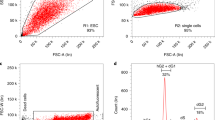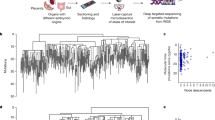Abstract
Embryological studies using cell and nuclear transplantation techniques have shown that during early development, cells undergo a stepwise restriction in their potential to undergo all forms of cell differentiation. This process has been termed determination. Genetic evidence suggests that the determined state is heritable and may occur several cell generations before it results in altered gene expression and altered cellular phenotypes, i.e. in differentiation. The formation of terminally differentiated cells such as erythrocytes and nerve cells, most likely consists of a well-ordered series of determination events followed by sequential phenotypic changes. While it is now well established that differentiation is associated with altered patterns of transcription and mRNA translation, very little is known about the molecular basis of determination. Among the mechanisms which have been considered are rearrangements of nucleotide sequences (recombination, amplification, deletion etc.), DNA methylation and altered DNA-protein interactions.
Access this chapter
Tax calculation will be finalised at checkout
Purchases are for personal use only
Preview
Unable to display preview. Download preview PDF.
Similar content being viewed by others
References
Ringertz NR, Savage RE (1976) Cell Hybrids. Academic Press, London New York
Harris H (1965) Behaviour of differentiated nuclei in heterokaryons of animal cells from different species. Nature (London) 206:583–588
Zuckerman SH, Linder S, Ringertz NR (1982) Transcription of chick genes by mammalian RNA polymerase II in chick erythrocyte — mammalian cell heterokaryons. J Cell Physiol 113:99–104
Linder S, Zuckerman SH, Ringertz NR (1982) Distribution of histone H5 in chicken erythrocyte — mammalian cell heterokaryons. Exp Cell Res 140:464–468
Linder S, Zuckerman SH, Ringertz NR (1981) Reactivation of chicken erythrocyte nuclei in heterokaryons results in the expression of adult chicken globin genes. Proc Natl Acad Sci USA 78:6286–6289
Linder S, Zuckerman SH, Ringertz NR (submitted) Pattern of chick gene activation in chick erythrocyte heterokaryons. J Cell Biol
Author information
Authors and Affiliations
Editor information
Editors and Affiliations
Rights and permissions
Copyright information
© 1982 Springer-Verlag Berlin Heidelberg
About this paper
Cite this paper
Ringertz, N.R., Linder, S., Zuckerman, S., Lanfranchi, G. (1982). Erythrocyte Heterokaryons — A Model System for the Analysis of Cell Determination and Gene Regulation. In: Jaenicke, L. (eds) Biochemistry of Differentiation and Morphogenesis. Colloquium der Gesellschaft für Biologische Chemie 25.–27. März 1982 in Mosbach/Baden, vol 33. Springer, Berlin, Heidelberg. https://doi.org/10.1007/978-3-642-68833-1_14
Download citation
DOI: https://doi.org/10.1007/978-3-642-68833-1_14
Publisher Name: Springer, Berlin, Heidelberg
Print ISBN: 978-3-642-68835-5
Online ISBN: 978-3-642-68833-1
eBook Packages: Springer Book Archive




